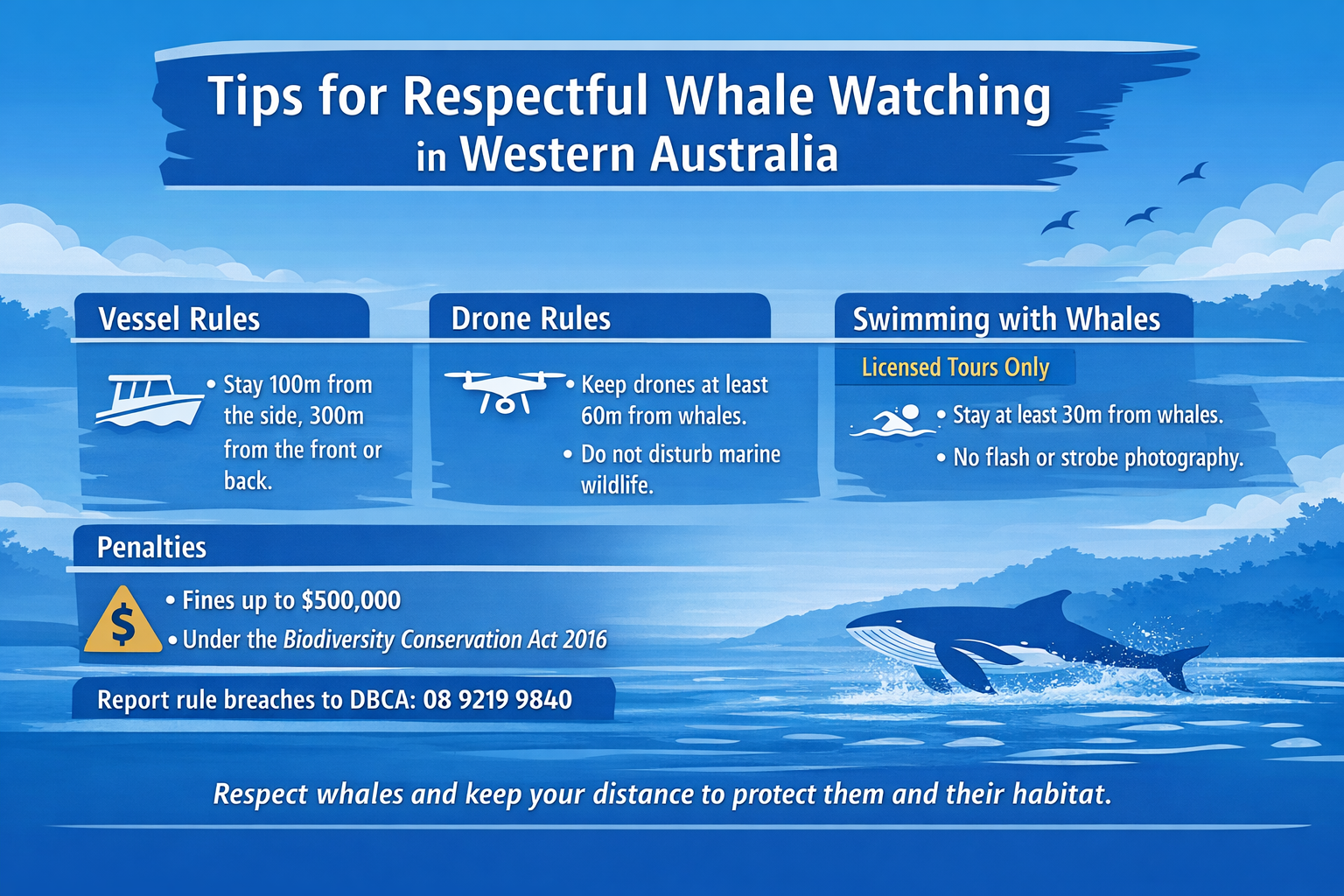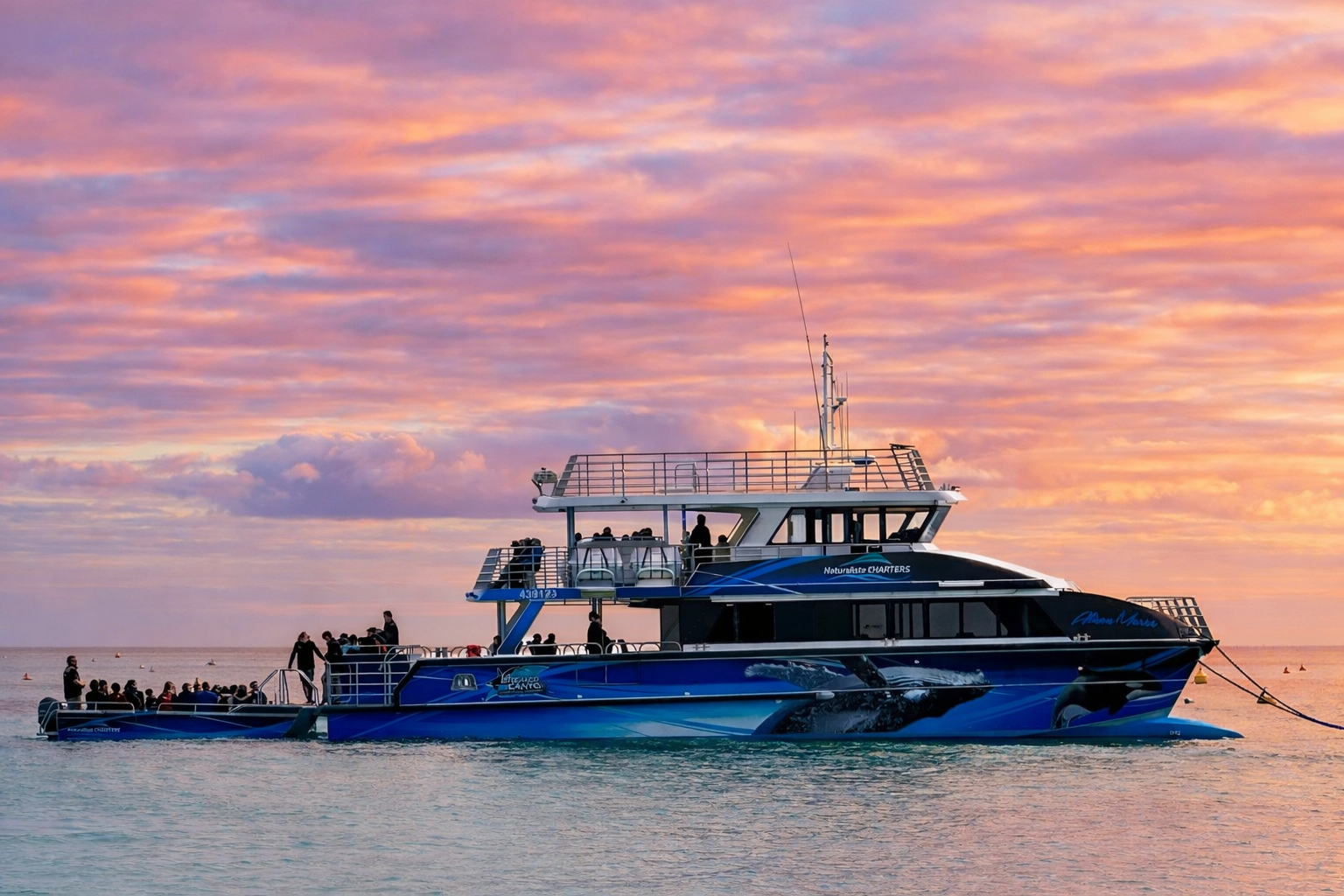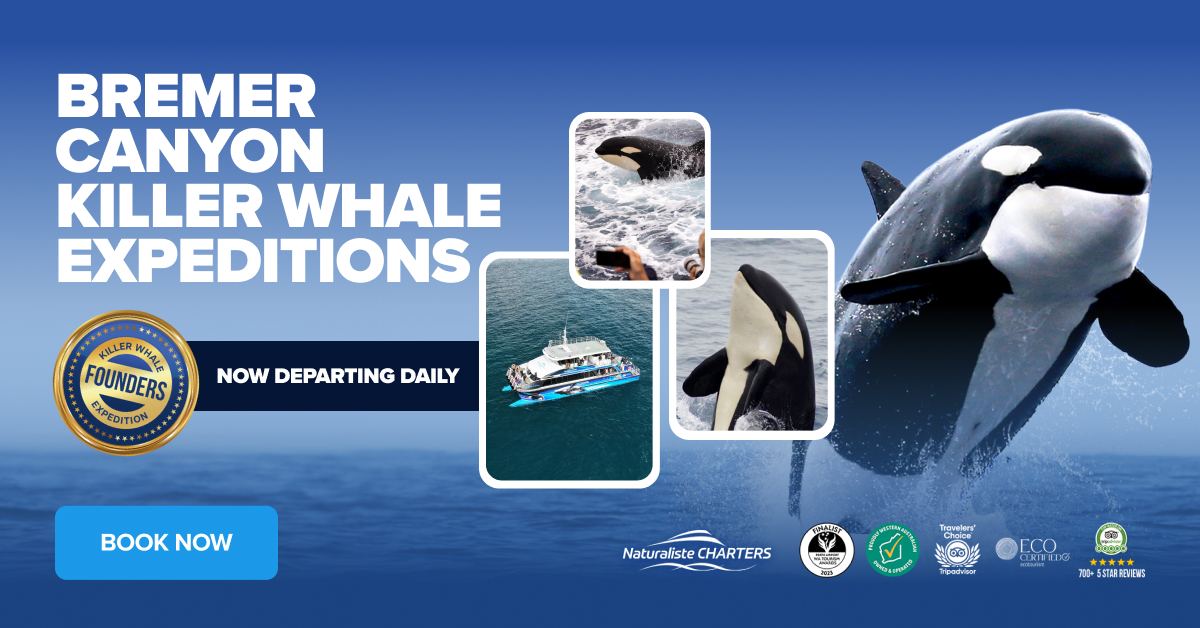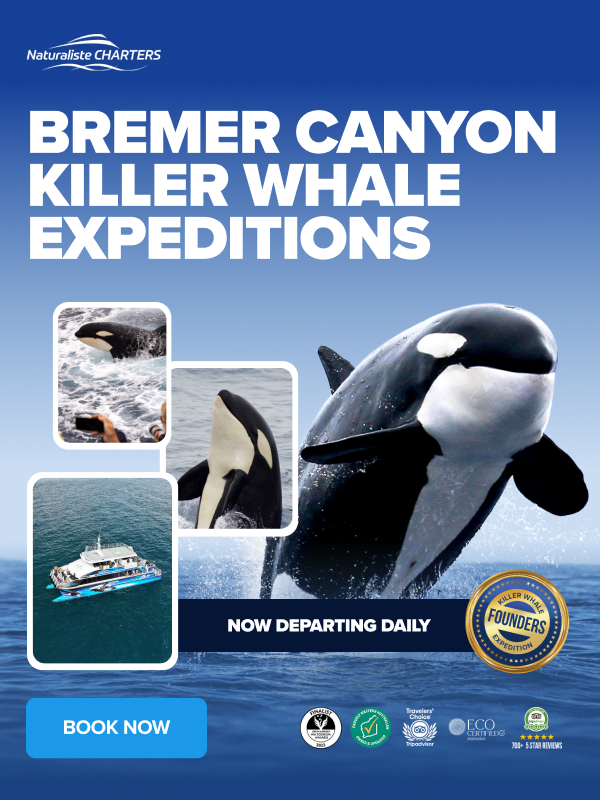The Ultimate Guide to Killer Whales in Australia: Facts, Ecotypes, and Where to See Them
Killer whales, or orcas, are some of the ocean’s most intelligent and complex creatures. Found in all oceans around the world, from icy Arctic waters to warm tropical seas, these apex predators captivate with their striking black-and-white appearance, remarkable social structures, and diverse hunting techniques. This guide explores everything you need to know about killer whales in Australia, their unique characteristics, and why Bremer Bay is the ultimate destination to witness these apex predators up close.
Where Are Killer Whales Located Around the World?
Killer whales are one of the most widespread marine mammals, inhabiting all oceans from the Arctic to the Antarctic and everywhere in between. They thrive in a variety of marine environments, from the shallow coastal waters to the deep open sea. However, they are most frequently found in areas with high marine productivity, such as the polar regions and the coastal waters of the Pacific Northwest.
This wide distribution allows orcas to adapt to many different environments, resulting in distinct populations that differ in appearance, behaviour, and even culture. For example, orcas in the Southern Ocean are often seen preying on large marine mammals, while those else where may specialise in hunting fish or seals on ice.
Are There Subspecies or Ecotypes of Killer Whales?
Scientists are still investigating whether different orca populations should be classified as separate species or subspecies. Currently, two provisional subspecies have been identified: the Eastern North Pacific resident and transient (Biggs) groups. These groups differ significantly in their behaviour, diet, and social structures.
More commonly, orcas are classified by “ecotypes,” which are distinct populations that do not interbreed with others. Each ecotype has its own unique characteristics, such as hunting strategies, social structures, and vocalisations.
In the Northern Hemisphere, the three main ecotypes are:
- Resident orcas: Primarily fish-eaters, these orcas are often found near coastlines and are known for their complex social structures.
- Biggs orcas (Transients): These orcas hunt marine mammals like seals and porpoises and are known for their stealth and quiet hunting techniques.
- Offshore orcas: A less studied group, these orcas are believed to feed on schooling fish and sharks.
In the Southern Hemisphere, there are five recognised ecotypes:
- Type A: Large orcas that primarily hunt minke whales in open water.
- Large Type B (Pack Ice): These orcas hunt seals on ice floes and are characterised by their larger size.
- Small Type B (Gerlache): Smaller, seal-hunting orcas found in the Antarctic Peninsula.
- Type C (Ross Sea): The smallest ecotype, which feeds primarily on fish.
- Type D (Sub-Antarctic): Rarely seen, with distinct physical features like a smaller eye patch and rounded dorsal fin.
Size and Speed of Killer Whales in Australia
Orcas are among the largest marine predators. The size of orcas can vary greatly depending on their ecotype. Male orcas typically range from 5.6 to 9 metres in length, while females range from 4.5 to 7.7 metres. The heaviest orca recorded weighed up to 10 tonnes, but most adult males weigh between 1.3 and 6.6 tonnes. Orcas are also incredibly fast swimmers, reaching speeds of up to 55 km/hr, making them one of the fastest marine mammals.
What Do Killer Whales Eat?
Killer whales have diverse diets that vary greatly depending on their ecotype and region. Some orcas specialise in hunting specific prey, while others are more opportunistic feeders. Their prey includes:
- Fish like salmon, herring, and mackerel.
- Marine mammals such as seals, sea lions, and even large whales.
- Squid and octopus.
- Sharks and rays.
- Seabirds like penguins.
- Occasionally land mammals such as deer and moose that may swim between islands.
In Australia, orcas near Bremer Bay are thought to have a diverse diet, including squid, fish, and smaller marine mammals. The abundance of prey in this region makes it a prime spot for orca sightings.
How Do Killer Whales Hunt?
Orcas are known for their sophisticated hunting strategies, which can vary by ecotype and region. They often hunt cooperatively, using their intelligence and communication skills to outmanoeuvre their prey. Some common hunting techniques include:
- Beaching: Temporarily stranding themselves on beaches to catch seals.
- Wave washing: Creating waves to knock seals off ice floes.
- Herding: Using coordinated efforts to corral schools of fish.
Orcas often hunt in pods, working together to trap and capture their prey. This cooperation is essential for hunting larger prey, such as whales or dolphins.
Family Structure and Social Life of Killer Whales
Killer whales are highly social animals that live in matriarchal family groups called pods. A typical pod can consist of up to 20 individuals, usually led by an older female. When the pod grows too large, females may split off and form new, smaller pods. Despite these separations, pods with shared ancestry often maintain close relationships, spending around 50% of their time together.
Males tend to stay with their mother’s pod for life, although they often travel alone or with other males. Females are more likely to form new pods but remain connected to their maternal group.
How Long Do Killer Whales Live?
The lifespan of orcas varies between genders. Males typically live up to 29-30 years, with a maximum lifespan of around 60 years. Females usually live longer, with an average lifespan of 50 years and some reaching up to 100 years. This longevity, especially among females, allows them to play a vital role in maintaining the structure and stability of their pods.
Why Do Killer Whales Visit Bremer Bay in Summer?
Bremer Bay, located on the southern coast of Western Australia, is a unique location that attracts a seasonal population of orcas. While the exact reasons for their presence are still being studied, it’s believed that the orcas are drawn by the rich marine environment of the Bremer Canyon, where nutrient-rich cold currents and methane seeps create a fertile feeding ground.
During summer, approximately 300-400 orcas utilise the canyon system, with Naturaliste Charters cataloguing over 250 individual orcas. The canyon is a hotspot for marine life, offering plenty of food sources, which attracts orcas and other apex predators.
Why Bremer Bay is the Best Place to See Killer Whales in Australia
If you want to see killer whales in Australia, Bremer Bay is the ultimate destination. With its rich marine ecosystem and seasonal influx of orcas, it’s one of the best places in the world for killer whale sightings.
Naturaliste Charters offers the Bremer Bay Killer Whale Expedition, a unique adventure led by experienced guides and marine biologists. During this expedition, you’ll have the opportunity to witness these incredible animals in their natural habitat, learn about their behaviours, and appreciate the beauty of the marine environment.
Current Threats to Killer Whales
Orcas face several threats in the wild, including:
- Captivity: Currently, 56 orcas are held in aquariums worldwide.
- Pollution: Contaminants like plastics and chemicals can impact their health.
- Noise pollution: Underwater noise from boats and ships can interfere with their communication and echolocation.
- Reduced prey availability: Overfishing can lead to a decline in their food sources.
- Global warming: Melting ice and changing ocean conditions impact the habitats of orca populations, especially those in colder regions.
How Can You Help Protect Killer Whales?
There are several ways to help protect killer whales:
- Support organisations working to conserve marine life.
- Reduce your plastic use to minimise ocean pollution.
- Promote sustainable seafood choices to ensure the health of marine ecosystems.
- Participate in eco-friendly tourism practices, like joining responsible whale-watching tours.
Join the Bremer Bay Killer Whale Expedition with Naturaliste Charters
For an unforgettable experience with killer whales in Australia, join the Bremer Bay Killer Whale Expedition with Naturaliste Charters. You will have the opportunity to see these majestic animals up close, guided by experts who share their knowledge and passion for marine life. This adventure offers an intimate look at the lives of killer whales in their natural habitat, making it a must-do for any wildlife enthusiast.
Conclusion
Killer whales are some of the most fascinating creatures in the ocean, with unique characteristics, diverse diets, and complex social structures. Whether you’re intrigued by their intelligence, their hunting techniques, or their strong family bonds, there is always something new to learn about these incredible animals. If you want to see killer whales in Australia, Bremer Bay with Naturaliste Charters is the best place to start your adventure.




